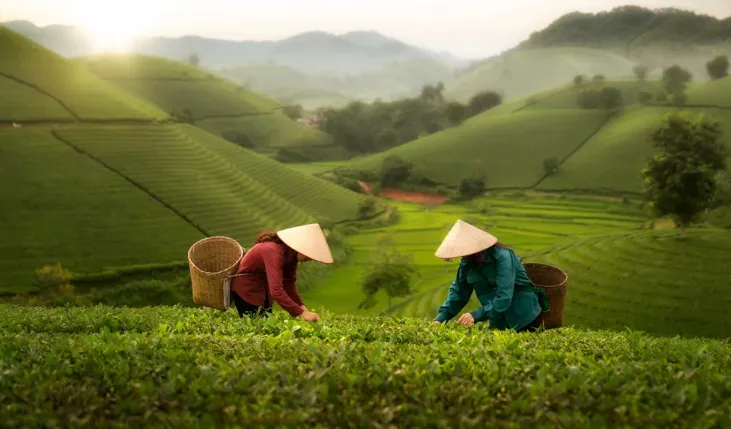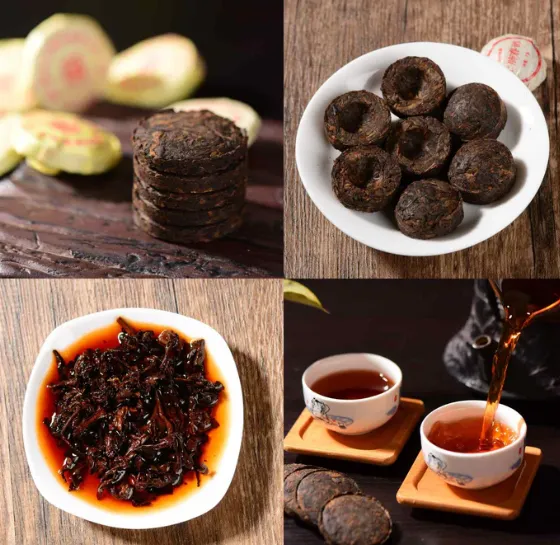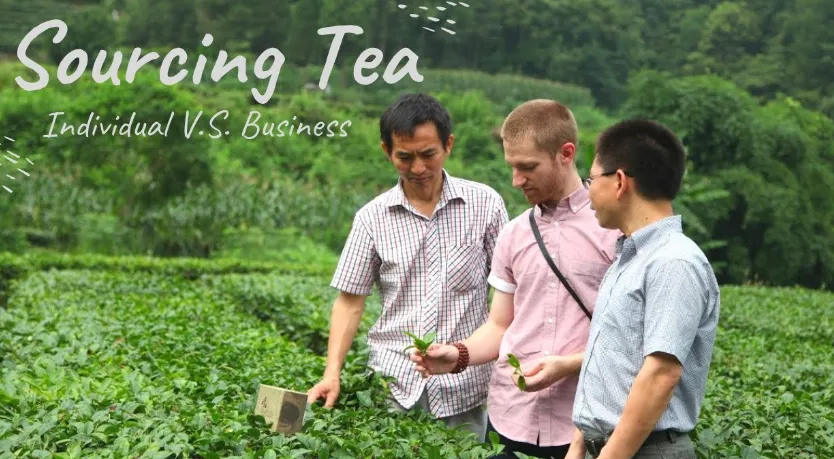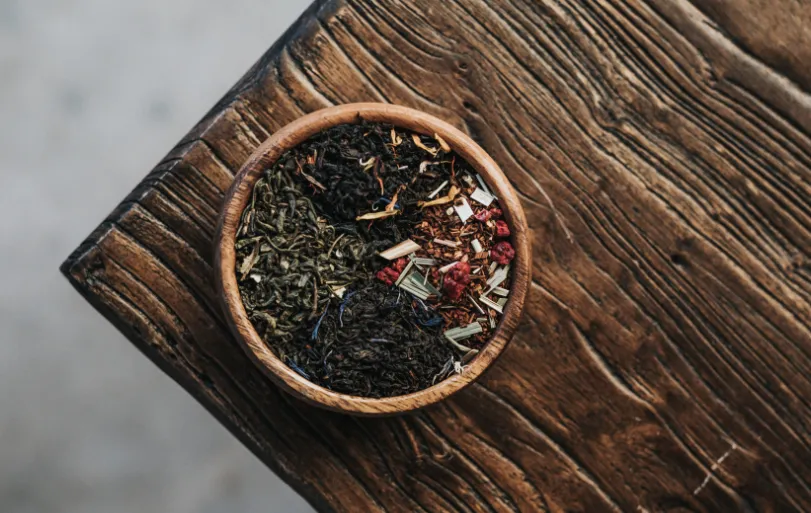How to Source Tea from China: Strategic Procurement & ESG Guide

If you're a procurement professional researching "how to source tea from China," you're likely looking for more than a list of websites. You're building or optimizing a supply chain that must balance cost, quality, risk, and increasingly stringent ESG (Environmental, Social, and Governance) mandates.
The common blog posts cover the "what"—the basic steps. This guide addresses the "how" and "why"—the strategic decisions that separate a successful, sustainable procurement program from a problematic one. We will provide a framework used by leading CPOs to establish a transparent, efficient, and ethical tea supply chain from China, whether you manage it internally or through a sourcing agent.

By the end of this guide, you will be able to:
Develop a data-driven sourcing strategy with clear KPIs.
Evaluate Chinese tea suppliers against robust ESG criteria.
Create a cost model that reflects Total Cost of Ownership (TCO).
Make an informed decision on using a sourcing agent.
Before contacting a single supplier, your strategy must be crystal clear. This phase determines everything that follows.
Vague goals yield vague results. Define success with measurable targets.
Commercial Objectives:
Cost: Target a 5-7% year-on-year reduction in Total Cost of Ownership (TCO), not just unit price.
Quality: Define acceptable defect rates (e.g., ≤0.5% rejection rate upon arrival).
Volume & Lead Time: Specify annual volume requirements and maximum acceptable lead times (e.g., 60 days from order to port).

ESG Objectives (The Differentiator):
Environmental: Target 100% of suppliers to hold verifiable organic or Rainforest Alliance certification within 24 months.
Social: Mandate that all factories pass an independent social audit (like SMETA) within 18 months.
Governance: Require full transparency of ownership and financial records for primary partners.
Actionable Tool: Download our Sourcing Strategy Canvas to map your objectives.
Your Key Performance Indicators (KPIs) must reflect your objectives. Track these in a supplier scorecard.
| KPI Category | Example KPIs | Why It Matters |
|---|---|---|
| Quality | Product Rejection Rate, Customer Complaint Index | Ensures consistency and protects your brand reputation. |
| Cost | Total Cost of Ownership (TCO), Cost Avoidance | Moves the focus beyond unit price to include logistics, tariffs, and risk. |
| Delivery | On-Time In-Full (OTIF) Rate | Directly impacts your production planning and inventory costs. |
| Sustainability | % of Suppliers with ESG Certifications, Audit Score Average | Quantifies your progress against ESG goals for internal reporting. |
This is not a binary good/bad decision. It's about fit.
Build an Internal Team if:
You have high, consistent volumes justifying dedicated staff.
Tea is a strategic, core commodity for your business.
You need absolute control over relationships and quality.
Engage a Sourcing Agent if:
You are new to the Chinese market or lack in-country expertise.
Your volumes are variable or not yet large enough for a full-time team.
You need to rapidly scale or navigate complex ESG compliance.
What to Require from a Sourcing Agent:
Don't just ask about their factory network. Ask:
"Can you share a redacted example of your supplier ESG audit report?"
"What is your process for verifying organic certificates with the Chinese certification body (CNCA)?"
"How do you manage corrective action plans for social or environmental non-conformities?"

Knowing the origin is part of quality and sustainability profiling.
Yunnan: Famous for Pu-erh tea. Look for ancient tree protection policies and ethical wild-harvesting practices.
Fujian: The home of oolong (e.g., Tieguanyin) and black teas (Lapsang Souchong). Focus on soil management and pesticide control.
Zhejiang: Renowned for green teas like Longjing. Water conservation is a critical ESG factor here.
Long-Listing: Use B2B platforms (Alibaba, Global Sources) with advanced keywords: "organic tea factory Fujian ISO22000." This filters out traders from actual manufacturers.
Initial Screening: Send a detailed supplier questionnaire covering capacity, key clients, and basic certifications.
Deep Due Diligence: This is the critical, often-skipped step.
This goes beyond asking for a certificate. It's about verifying practices.
Environmental Compliance:
Certificates: Require original, valid certificates for organic, Rainforest Alliance, etc. Cross-check the certificate number with the issuing body's online database.
Waste Management: Ask for documentation on water treatment and solid waste disposal. Do they recycle tea clippings?
Carbon Footprint: Do they track energy consumption? Can they provide data for your Scope 3 emissions reporting?
Social Responsibility:
Payroll Records: Request redacted samples to verify fair wages and overtime pay compliance.
Facility Audit: Insist on a virtual or in-person tour. Look for safety signage, clean dormitories (if provided), and first-aid stations.
Interview Workers: A good agent can facilitate confidential worker interviews to gauge true working conditions.
Quality & Food Safety:
HACCP/ISO22000: These are non-negotiable for serious B2B partnerships. Audit the plans yourself.
Lab Testing: Pre-qualify suppliers by requiring a third-party lab test (e.g., SGS) for pesticides and heavy metals on their standard product.
Actionable Tool: Download our complete Sustainable Tea Supplier Evaluation Checklist.
The contract and logistics phase is where risks are concretely managed.

Your purchase agreement must be detailed.
Specifications: Attach a full product specification sheet with color, moisture content, and taste profile.
ESG Clauses: Include clauses that allow for audit rights and termination for ethical breaches.
Incoterms: Choose wisely. FOB (Shanghai) is common, giving you control over shipping and insurance. Avoid EXW unless you have a strong presence in China.
Never pay 100% upfront. Use a milestone-based payment (e.g., 30% deposit, 70% against shipping documents).
Pre-Shipment Inspection (PSI): Hire a third-party inspector like SGS or Bureau Veritas to check quantity, quality, and packaging before shipment leaves the factory. This is your last line of defense.
Documentation: Ensure the supplier provides a complete set of documents: Commercial Invoice, Packing List, Certificate of Origin, and most importantly, the Health Certificate issued by Chinese customs. This is mandatory for food imports in most countries.
Import Regulations: Understand the maximum residue levels (MRLs) for pesticides in your destination country (e.g., EU, USA). Your supplier's lab tests must confirm compliance.
Procurement doesn't end with the first shipment. The real value is built over time.
Conduct quarterly business reviews (QBRs) with your top suppliers. Use the scorecard from Part 1. Discuss performance, market trends, and collaborative cost-saving or sustainability projects. This shifts the relationship from transactional to strategic.
The most resilient companies invest in their suppliers.
Co-fund technology upgrades for better energy efficiency.
Provide training on international food safety standards.
Explore traceability technologies (like blockchain) together to provide end-consumers with proof of origin and sustainability.
Sourcing product tea from China requires a systematic and strategic approach. It's a cycle of planning, executing, reviewing, and improving.
Your Next Steps:
Download the Tools:Use the Sourcing Strategy Canvas and Supplier Evaluation Checklist to formalize your approach.
Conduct a Pilot: If you're new, start with a smaller order for a single tea variety to test the process and the partnership.
Ask the Right Questions:Whether dealing directly with factories or through agents, demand transparency and data.
Building a sustainable tea supply chain from China is a complex but highly rewarding endeavor. It de-risks your operations, builds brand value, and ensures the long-term viability of the products your customers love.
1. Q: We are a small but growing brand. What is the most effective way to approach a large Chinese tea factory without being ignored due to our initial low order volume?
A: The key is professionalism and a clear growth trajectory. Instead of leading with a small order quantity, frame your initial contact strategically. Introduce your company, your brand story, and your quality/ESG standards. Explicitly state you are conducting a supplier qualification process for a pilot order, with the intention of scaling volume significantly upon successful collaboration. This positions you as a serious long-term partner, not just a one-time small buyer. Request a small batch for product development, which is a standard practice they understand.
2. Q: Beyond organic certification, what are some less obvious environmental red flags we should look for when auditing a tea factory in China?
A: Excellent question. Look beyond the certificate. Ask about their packaging waste: do they use biodegradable inner liners or reusable chests? Inquire about their energy source for the drying/firing process; modern factories are moving away from coal to electricity or natural gas. A major red flag is a lack of wastewater treatment plans, especially for water-intensive processes like washing tea leaves. A proactive factory will have measures in place to recycle water.
3. Q: How can we protect our proprietary tea blend or branding concept when working with a manufacturer in China?
A: This is a critical IP concern. Before sharing any specifications, have the supplier sign a robust Non-Disclosure Agreement (NDA) that is enforceable in their jurisdiction. For custom blends, you can split production: source the base teas from one supplier and have the final blending and packaging done by a separate, trusted facility. Legitimate factories respect IP, but structuring your supply chain to protect sensitive elements is a fundamental risk mitigation strategy.
4. Q: What are the typical payment terms we should expect for a first-time order, and how can we negotiate better terms as trust is built?
A: For a first order, expect conservative terms: 30% to 50% deposit with the balance paid before shipment (or against copy of shipping documents). This protects the supplier. To negotiate better terms over time, consistently demonstrate reliability: pay invoices on time, provide accurate forecasts, and communicate clearly. After several successful orders, you can propose a milestone payment plan (e.g., 30%/40%/30%) or even open account terms for a limited amount, tying the improved terms to increased volume commitments.
5. Q: Are there any specific cultural nuances or business etiquette tips that can help build stronger, more trusting relationships with Chinese tea producers?
A: Absolutely. Relationship (guanxi) is currency. Take the time for small talk before diving into business. Accepting tea during a meeting is a sign of respect. When negotiating, avoid aggressive, confrontational language; frame disagreements as shared problems to solve. During festivals like Chinese New Year, a simple greeting message is appreciated. Most importantly, be patient and focus on building a long-term partnership, not just securing the lowest price on a single transaction.
6. Q: If a shipment is held up at customs in our country due to an issue with the supplier's documentation, who is financially responsible for the demurrage and storage fees?
A: This is precisely why your Incoterms and contract are vital. If the issue is due to an error in the documents provided by the supplier (e.g., an incorrect Health Certificate), the financial responsibility typically falls on them. Your contract must explicitly state this. However, if the hold-up is due to your country's import regulations (e.g., a random intensive inspection), the cost is usually yours. Always work with a experienced freight forwarder who can clarify liability in real-time.
7. Q: What is a realistic timeline from initial supplier contact to having tea arrive in our warehouse?
A: Do not underestimate the timeline. A realistic schedule for a new sourcing project is 4-6 months. This allows 1-2 months for supplier identification, vetting, and sampling; 1 month for negotiation and contracting; 30-45 days for production (depending on the tea); and 30-45 days for shipping and customs clearance. Rushing any of these stages introduces significant risk.
8. Q: How does the seasonality of tea harvests in China impact pricing and production planning? Should we be buying annually or in smaller batches?
A: Seasonality is crucial. Spring teas (harvested March-May) are often the highest quality and most expensive. Prices may drop for later harvests. For stable, year-round products, many buyers purchase their annual requirement of a specific tea after the spring harvest to lock in quality and price. This requires significant capital and storage. Alternatively, buying in smaller batches throughout the year offers flexibility but exposes you to price volatility and potential quality variations. Your choice depends on your cash flow, storage capacity, and product consistency requirements.
9. Q: We've found a great tea, but the factory's packaging capabilities are poor. What are our options?
A: This is common. You have two main options. First, you can source the tea "loose" from the primary factory and use a specialized packaging supplier in a more industrial area (e.g., near Shanghai or Shenzhen) for branding and final packing. This is often called "split shipping." Second, you can provide the packaging materials to the tea factory for them to perform the final pack. This gives you control over quality but adds complexity in logistics and quality control at their site.
Contact us
Call Us: +86 193 7668 8822
Email:[email protected]
Add: Building B, No.2, He Er Er Road, Dawangshan Community, Shajing Street, Bao'an District, Shenzhen, China